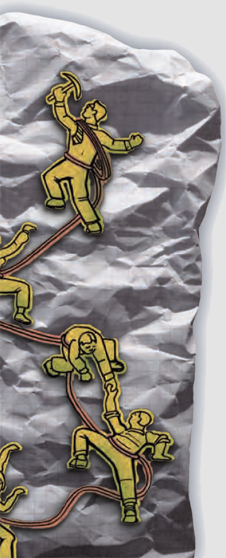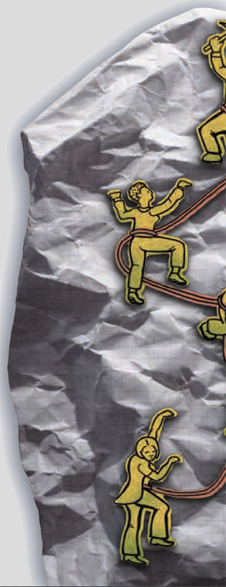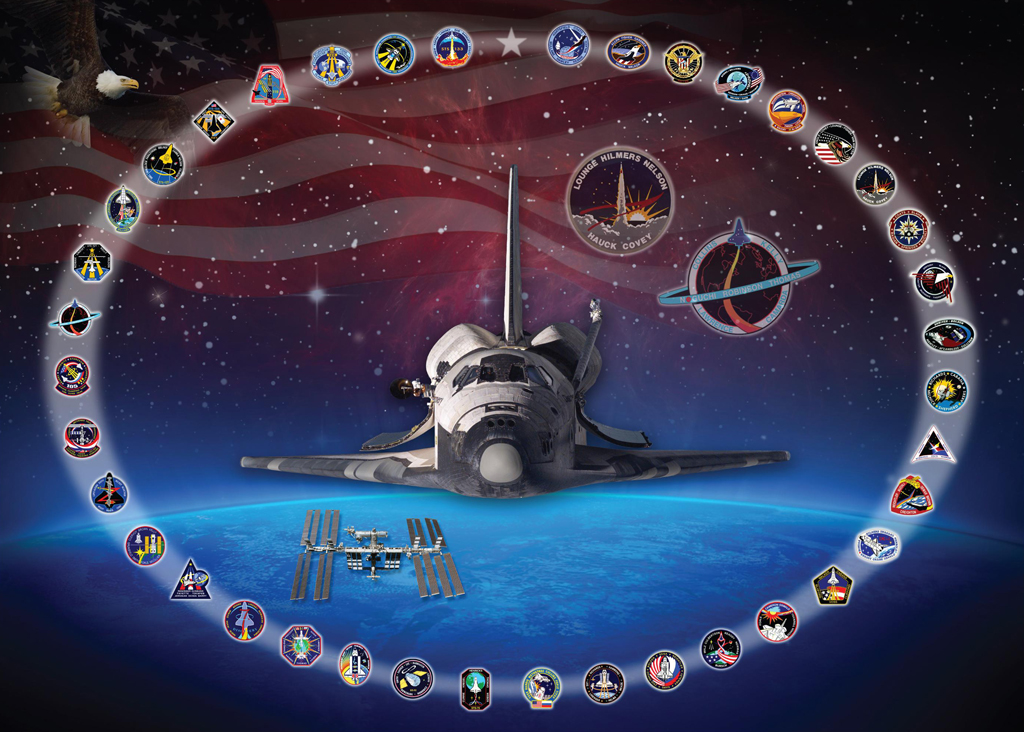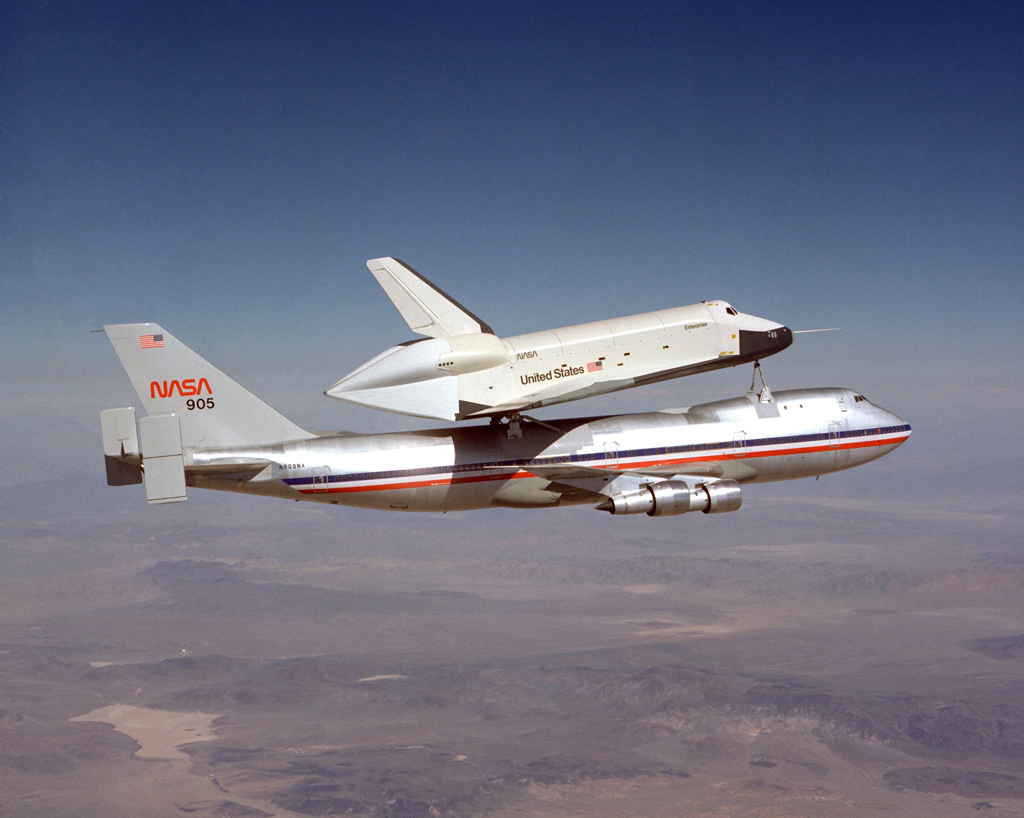By Kent A. Greenes
Faced with challenging projects, teams call on colleagues with relevant experience.
Knowledge workers in NASA work on the edge, carrying out complex projects that have never before been attempted.  It shouldn’t be a surprise to discover that teams working on these projects cannot possibly know everything they need to know to perform to the highest standards. In many cases, they haven’t had the opportunity to learn from previous experience, or they haven’t had ready access to those who have “done it before.”
It shouldn’t be a surprise to discover that teams working on these projects cannot possibly know everything they need to know to perform to the highest standards. In many cases, they haven’t had the opportunity to learn from previous experience, or they haven’t had ready access to those who have “done it before.”
It’s not always easy to admit we don’t know everything, but once we do and ask for help, the process of gaining new knowledge has already begun. It takes time and effort, though, to get the right knowledge to flow and transfer when and where it’s needed. Fortunately, there is a proven knowledge management technique that can help. Called a peer assist, it accelerates the transfer of knowledge from those who have it to those who need it in many organizations.
The Peer Assist
A peer assist is a facilitated work-session, held face to face or virtually, where peers from different teams and organizations share their experiences and knowledge with a team that has requested help in meeting an upcoming challenge. Knowledge in the form of good practices, lessons learned, and insights is typically shared through relevant stories told by the people who experienced them. A peer assist does three things:
- Targets a specific technical, mission, or business challenge
- Acquires assistance and insight from people outside the team and identifies possible approaches and new lines of inquiry
- Promotes sharing of learning and develops strong, and often new, connections among staff, partners, suppliers, and customers
I recently facilitated a peer assist for a health care provider in Alaska whose aim was to develop a capital business plan that would gain approval from budget holders outside Alaska to renew aging facilities and grow capability for long-term health care. A preliminary version of the plan had met resistance from these decision makers; the Alaska team was told to go back to the drawing board and develop a plan that required significantly less investment. The team had been working for months at reducing the cost and had gotten to a point where they exhausted what they knew and the knowledge they were able to get their hands on. They called me in to plan and facilitate a peer assist.
After calls with potential peers from the provider’s operations in Washington and Oregon, we held the peer assist in Anchorage with the home team and eight visiting peers. The peers openly shared the lessons they learned from developing capital plans for long-term-care facilities in their regions. It was clear by early afternoon on the first day of the peer assist that their advice to the Alaska team was to reduce their capital plan by remodeling and repairing existing facilities.
The Alaska team insisted that their environment and customer needs were different from those in the northwestern United States and remodeling wouldn’t provide the long-term care needed to attract, serve, and retain potential Alaskan customers. Later that afternoon (and planned as part of the session) the peers visited several long-term-care facilities. The experience made all the difference in the world. The visitors now understood the Alaskan context for long-term care and changed their advice. They felt new facilities were warranted in Alaska and spent the second day of the session developing new options and approaches for capital-plan submission with the home peers.
One of their recommendations was to perform a new survey of the aging population in the region. The peer from the Oregon provider operations had recently done something similar and offered a set of questions and a survey approach that were geared to providing design input for the development of long-term-care facilities. On the spot, the peers modified the design of the survey to address the Alaskan environment, native Alaskan culture, and other unique aspects of the aging customer base in that region.
The session led to a breakthrough in the Alaska team’s thinking and capital plan. Not only was their plan approved, but the visiting peers benefited from the experience as well. An e-mail received by the Alaska team leader reinforced this: “Thank you again for the wonderful opportunity to work together last week. I really applaud your willingness to hear new ideas and your dedicated commitment to the people you serve. Kent, you taught us a new appreciation for the power of coming together to harness our collective knowledge to fulfill our mission. It was an enlightening two days for me, and I am very grateful for the experience.”
Many of the peers who came together for those two days continue to communicate and collaborate on a routine basis.
Why It Works
 A peer assist works because peers more readily share their knowledge with each other—and accept knowledge from each other—than through hierarchies or official channels, where politics and other issues often hamper free exchange. And they are more likely to tell the truth about problems they have encountered.
A peer assist works because peers more readily share their knowledge with each other—and accept knowledge from each other—than through hierarchies or official channels, where politics and other issues often hamper free exchange. And they are more likely to tell the truth about problems they have encountered.
When the peer assist occurs is critical. People are more open and inclined to use knowledge they gain from others if they get it before they commit to a specific plan of action. Once we start down a certain path, it’s hard to get ourselves to think differently. So the key to a successful peer assist is to convene the session after a team has exhausted what it already knows and created its plan, but before the start of actual work.
Peer assists are most successful when the participants have time to socialize and get to know and understand each other. This helps people open up and share their hard-earned expertise, especially the wisdom gained from painful experience.
When I was with British Petroleum (BP), our retail business wanted to enter the Japanese market. The international team responsible for creating the business in Japan hosted a peer assist to learn from other BP retailers before they implemented their plan to enter this new market. Peers came from all over the world to share their experience. The hosting team didn’t want to spend much time on the process, but we convinced the leader that the session should take two days. On the first day, the home team showed the peers their proposed station sites, visited competitor sites, and shared their building plans and challenges. When they asked for the peers’ input, the quality and amount of contributions were very low.
In side conversations and in private, however, they all said Japan had too mature a retail market for our typical new-entry approach. Plus, there was a “gas war” going on in that region. But nobody dared say openly that they thought the Japan team’s approach was seriously flawed. After dinner that night, we went to karaoke bars then to a Japanese bath, where we all had to get naked, as is the tradition in Japan. The next morning, the feedback, storytelling, and sharing differed phenomenally from the day before. The peers honestly and openly shared their skepticism and their own tough experiences. As a result, the Japan team modified their plan in a matter of days and went on to an accelerated, successful entry into the market. I have no doubt that taking time to build relationships and trust during the peer assist enabled the participants to open up and share their knowledge truthfully.
Who Can Help You Learn?
It’s surprisingly easy to find people with relevant knowledge. One of the easiest and most effective methods is to tap your personal network to find who might have experience in the particular challenges you are facing. Even if the people you contact don’t have relevant experience themselves, they will likely know “someone who knows” and may offer to connect you to them.
The other obvious approach is to search your company intranet for people with relevant skills and relevant experience. Better yet, if your organization has internal social networking sites, blogs, and wikis, these can be quickly and conveniently searched for potential peers. Similarly, you can contact people in relevant communities of practice, professional forums, and networks to ask for help or contacts. Sometimes it is helpful to involve people with diverse experience who can push boundaries and lead to innovative thinking in the session. In some organizations, teams announce their intent to do a peer assist by posting the subject and associated challenge on their company’s intranet or electronic news facility. This enables people with relevant expertise to offer their help.
Engineering for Success
Based on my experience facilitating hundreds of peer assists, here are some critical things to do to ensure a successful outcome:
- Define the problem or opportunity that you are facing, and decide whether a peer assist is the most appropriate process.
- Write and disseminate a brief description of your need to peers, giving them the chance to self-select for participation.
- Look for diversity, that is, people who will help your team confront the problem from different perspectives.
- As soon as possible, identify people who can participate on your selected dates—fitting into their schedules is critical.
- Identify an experienced facilitator who understands the learning process.
- Design the event to ensure plenty of time to reflect.
- Allow the peer-assist team members time as a group during the session to analyze their findings.
- Ensure the key lessons and good practices shared during the session are captured. This may require some followup work to gather sufficient detail for those who did not participate.
- Agree to a set of actions.
- Make your findings accessible to others outside the group.
Peer Assists in a Virtual World
One of the things that limits the application and impact of the peer assist is a team’s ability to hold the session in a timely manner. Virtual meeting technologies can really make a difference. I have facilitated many virtual peer assists online using standard web-conferencing tools. Yes, it’s tougher to socialize and build the respect and trust needed for open sharing and transfer. But what you lose by lack of face-to-face interaction you gain by making it feasible for peers to participate. More often than not, you are likely to get the right peers to participate because they don’t have to travel.
Virtual peer assists are most effective when the challenge is specific and bounded. A good example is one I facilitated for an international oil company that was drilling their first high-pressure, high-temperature well in thirty years off the coast of Norway. The Norwegian government had set very high standards and extensive requirements for drilling in this deepwater environment, which included how the well was cased in cement to prevent gas blowouts and other operational risks.
The team was two months away from setting casing when they realized their plan for cementing the well was way beyond budget. To make up for their lack of local experience and knowledge about procuring and setting casing in such an extreme environment, they had over-engineered a solution that required a greater amount of cement to minimize risk. I was brought in to facilitate a peer assist targeted at optimizing the cement-casing job. After eight hours of phone calls and personal networking, the Norway engineers were able to identify seven engineers across their global operations who had relevant experience and could spend a few hours on short notice in a virtual peer-assist session.
They reviewed well schematics online and in downloaded form, and asked lots of questions. Although most of them never met or knew each other, in a two-hour session the peers shared enough cementing knowledge to significantly change the Norway plan, reducing costs by $2 million.
Not a Silver Bullet
The effectiveness of a peer-assist technique in transferring knowledge in real time from those who have it to those who need it has been demonstrated over and over again. But that doesn’t mean it will always lead to improvements in performance. There are times when a peer assist is not really needed or the cost outweighs the benefits.
Also, transferring knowledge is one thing, and getting people to use it is another. Knowledge doesn’t matter until the receivers apply it to make a difference. This is something I learned early on in my years applying this technique in BP. Recently, a lot of people have asked me, “If BP had such great knowledge-exchange techniques, how come they’ve screwed up so badly?” My simple answer is peer assists work, but they can’t force people to use the knowledge they make available.
One thing I do to address this issue is try to get the home peers to agree in advance to allow me to do some follow-up facilitation to complete the knowledge-transfer process. Basically, this involves tracking their work after the peer assist is over and prompting and provoking them to apply the knowledge they gained from the visiting peers.
This article is based on the work and experiences of the author and the knowledge management team at BP from 1995 to 1999.
 |
Kent A. Greenes is founder of Greenes Consulting. Previously, he was head of knowledge management for British Petroleum and chief knowledge officer of SAIC. |









